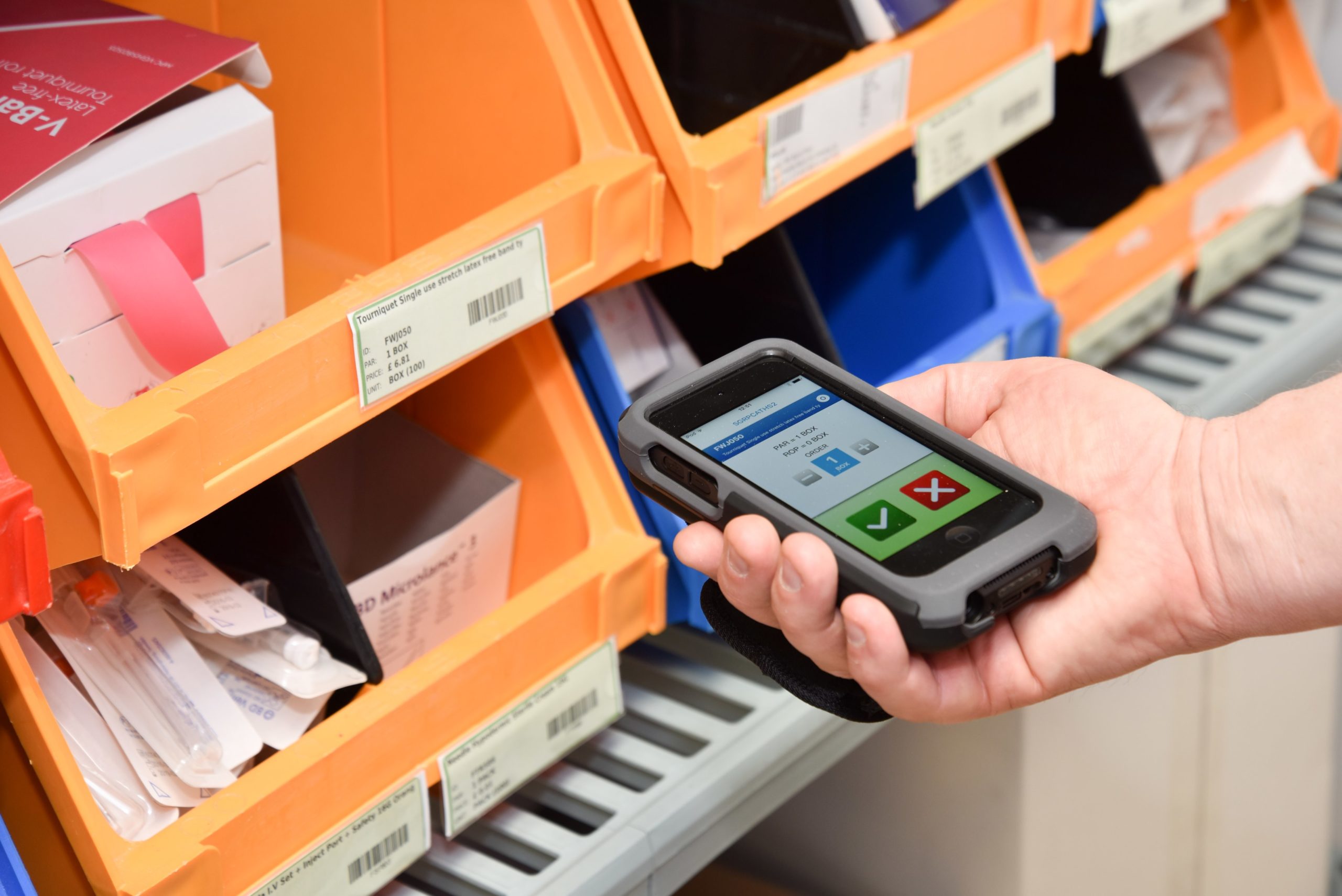Transforming hospital supplies management

Why digitising your hospital supplies management can improve patient safety, reduce spend and drive efficiencies.
In a regular organisation, inventory management matters. But in a hospital setting, the stakes are that much higher as missing or poorly managed inventory can put lives at risk. Health is by far the biggest area of government procurement spending; in fact, it is more than three times larger than defence spending, the next largest area. Most NHS procurement spending in England goes on healthcare, with around £18bn on medicine and nearly £6bn per year on ‘hospital consumables’ – any supplies ranging from gloves and syringes to surgical equipment, devices and implants.
Yet despite the vast overhead, and at a time when cost efficiencies are paramount, in most cases there is a lack of oversight around medical supplies management. Many Trusts I have spoken to have inadequate systems in place to manage their supplies. As a result, many are left holding onto high levels of non-moving stock, unnecessary expired waste, stock outs, diversion (theft) and time-consuming re-stocking practices due to poorly managed and scattered storage locations.
In addition, from a patient safety perspective, staggeringly, until the Scan4Safety Evidence Report in 2020, following a trial in six hospital Trusts in England, together with the recent introduction of the Surgical Device and Implants Information System, no implant used during surgery required being registered back to each patient. This is absolutely crucial in the event of a product recall being issued and the need to locate the patient for review or removal of a particular implant or device.
Over the last 10-plus years, we have seen this problem play out very publicly during the Poly Implant Prothese or ‘PIP’ scandal as it was known. Worryingly, this issue still isn’t over, not least because it has been exceptionally difficult and, in some cases, impossible to trace those affected patients.
Patient safety is further compromised by the lack of insights captured around product expiration dates – an overstretched and busy workforce often has no time to check and register product information using manual record-keeping, or records are made but are subsequently lost.
It is also in the theatre environment where the risk of diversion is a very real problem for many hospitals. High-cost items like patient devices, implants and surgical apparatus can often disappear with no audit trail to evidence who last accessed the lost item, where and when.
Solution
Although stock management is complex, we are helping NHS Trusts and Health Boards tackle these kinds of issues through a combination of smart automation, software and consultancy services all used in combination.
Omnicell’s offering, which we call the SupplyXpert Inventory Management Solution, drives;
- Full compliance with implant requirements, including a fast reaction to health alerts with complete traceability.
- An ability to reduce stock levels (and create savings doing so), cut down stock-outs and expired stock, bring in better oversight and audit on high-value implants and consigned items; ensuring a faster return on investment.
- A significant reduction in staff time spent locating items, or doing last minute re-orders, and instead automating top-ups based on known stock levels.
- Total control of inventory with visibility on what supplies are stored where and how many.
So, what kit would I need?
RFID Supply Cabinet; the GS1 RFID cabinet ensures maximum control and compliance. It’s ideal for high-cost items, implantable devices and trauma trays – where you need to take and return multiple items at once. All items in the cabinet are RFID tagged and the system quickly scans everything in the cabinet, confirming what has been taken, returned or restocked. This ensures that there is no last-minute ordering of implants for the next day’s patient list.
The cabinet can be configured internally to meet the specific needs of your hospital. It can scan all items inside the cabinet, regardless of their position or orientation. Clinical staff do not need to scan or press anything – the cabinet does it all for them.
Finally, the Cabinet provides real-time information about all dispensed and returned products. This allows for: product expiry control, automatic restock of orders, the allocation of costs per patient or surgical procedure and complete traceability of batch/serial numbers.
XT Supply Cabinet; Medical supplies in storerooms, on the ward and in operating theatres are managed by Omnicell XT Supply Automated Dispensing Cabinets for additional compliance and security. The Cabinets keep consumable medical supplies secure yet easily accessible via a fingerprint bioID system providing fast yet secure access. The cabinets are designed so they can deliver generous capacity and ease of use for both acute care and non-acute care environments. This increased capacity helps to reduce stockouts, with guiding lights visible in any environment and a highly responsive touchscreen – similar to a current smartphone.
XT Supply Handset; The handset provides point-of-care capture and the ability to ‘track and trace’ to help drive patient outcomes and, crucially, increase patient safety – key components of GS1. All low-cost store room-based stock is bar-coded and scanned regularly to give visibility of inventory levels using Omnicell’s SupplyX handset, with materials management teams running top-ups from the wards. Working in combination with the hardware, it provides real-time stock level information in a dashboard view and a reporting suite that links to your hospital reporting system. The SupplyXpert software allows you to control and report on open and closed stores for both top-up and perpetual inventory management of stock on all sites. This expanded inventory visibility ensures you use and buy less and, crucially, ensures that nurses can focus on face-to-face patient care, rather than searching for supplies.


To find out more about how the Supply X System could support your hospital, please visit: Omnicell.co.uk or email: Sales-aa@Omnicell.com.
